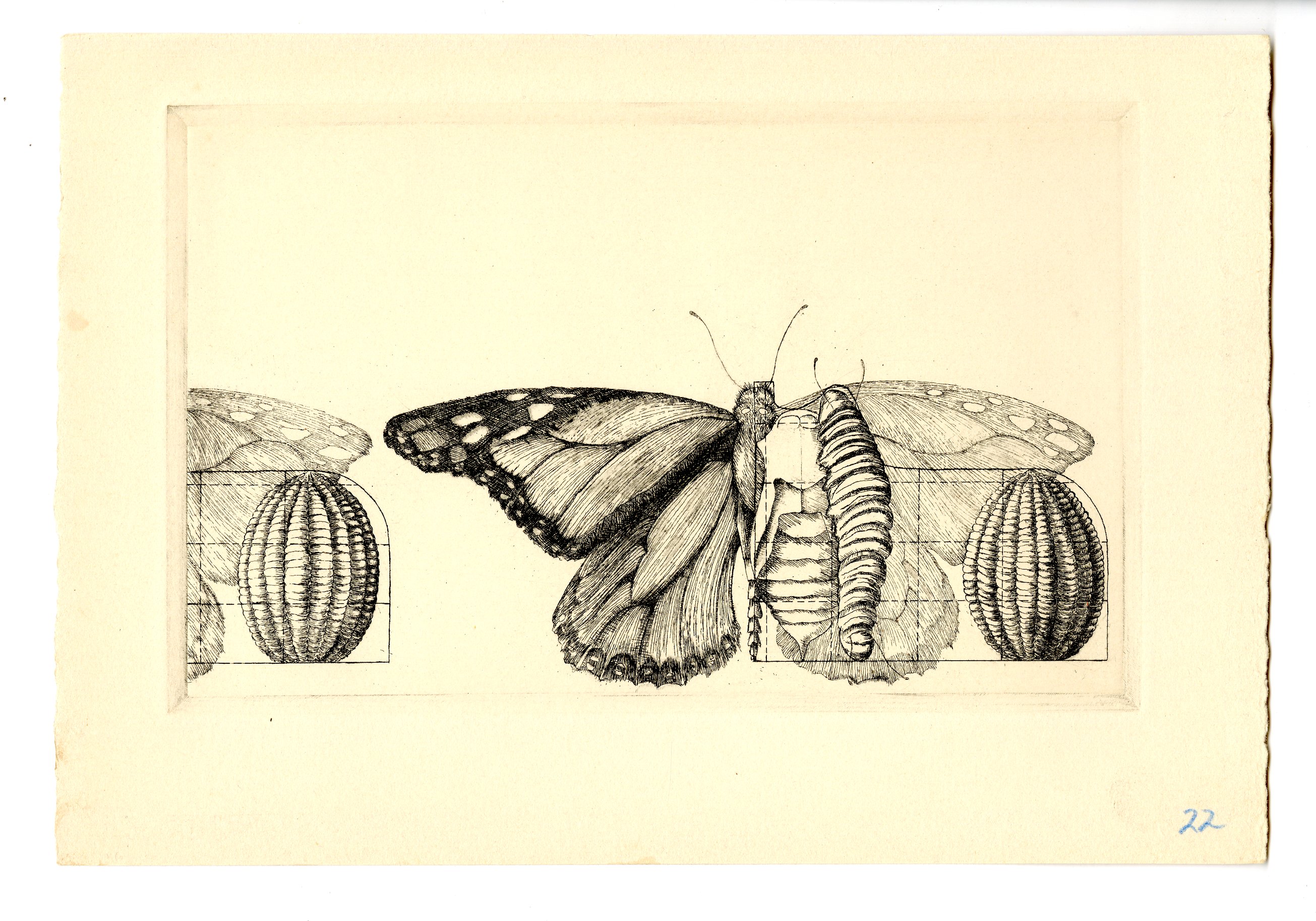Art Behind the Science
A microscopic sequence framing the different stages of Dictyostelium discoideum in its life cycle. Amoebae aggregates and forms into a slug that leaves behind a trail as the slug formation moves towards certain elements. Folder citation: Prints: Cellular Slime Mold 1, 1963-01-03-1965.
John Tyler Bonner (APS 1972) was a biologist known for his research on cellular slime mold (Dictyostelium discoideum), a type of amoeba that merges with other unicellular cells to form into a slug during the cell’s life cycle. Bonner became part of the Princeton University faculty in 1947 and retired in 1990, but continued as Emeritus Professor. His papers came to the APS’s collection in 2011. Bonner has since passed away in 2019. The finding aid for the John Tyler Bonner Papers, 1884-2011 can be viewed here.*

Bonner sought to make his research accessible for those interested in learning biology through documentaries, interviews, and publications. In total, Bonner published 19 books, numerous articles, book reviews, and various popular essays. Although Bonner is known for his research on cellular slime mold, he often researched and published on the life cycle of other organisms.
Bonner’s meticulous organization and detailed notes allowed me to identify which illustrations belonged to each of his publications. One of Bonner’s earliest publications, Size and Cycle: An Essay on the Structure of Biology, details the life cycles of various organisms. I highlight this publication because it shows the art and extensive work needed to illustrate these processes.

Size and Cycle has eight folders in “Series VIII. Graphics” that contain plates and folders. The first folder of plates includes the original etchings. There are multiple copies of some plates because the etchings were modified–changed in scale or darkened lines. See the image above of Plate 22.
Additional modifications include the etchings being mirrored in the recto and verso drafts (the right and left hand pages, respectively). The mirrored image was printed in the finalized publication. The recto and verso drafts demonstrate the methodical placement of text and images on the pages. In the image below, the page shows the text for Plate 21 of a grasshopper and Plate 22 of a butterfly. Text identifiers of scale and time were cut out and glued on to the mirrored plates. Then, these drafts were submitted for publication and printed.

In addition to plates, Bonner included figures throughout the text of Size and Cycle. One folder contains a cardboard sample of the figure and another is an oversized image with a wax sheet folded over it. The cardboard figure is pasted with rubber cement and a white sheet taped to the front as a protective layer for the glued-on text. The oversized images are printouts that also include glued-on text, as well as written notes. The wax paper serves as a protective layer and also includes text. The handwritten text matches the glued-on text. For an example, see the image below of Figure 15 which corresponds to Plate 22 of the butterfly.

Fortunately, Bonner saved a decent amount of materials that document the multiple steps needed to publish an illustrative text. Researchers can go back and trace his thought process and understand the way Bonner intended his research to be viewed by the general public. In some aspects, these materials show a history of publication.
*Additional updates to the online finding aid are expected soon. Check back for more!

